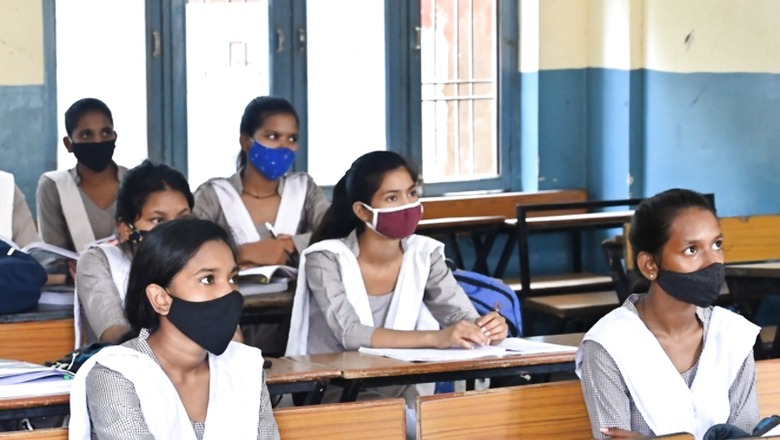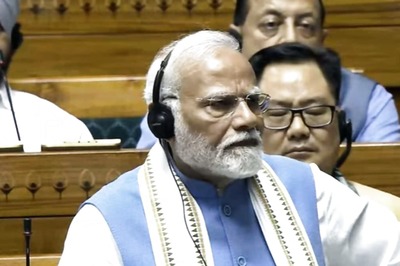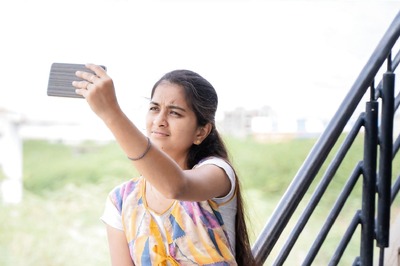
views
The column is written by Dr. Chandrakant Lahariya (MBBS, MD), a Physician-Epidemiologist and a leading expert on COVID-19 disease and vaccines. In this fortnightly column, Dr. Lahariya picks up various topics and gives you tailored solutions, catering to the health needs of your entire family — kids, adolescents, adults, and senior citizens, and all the other members.
The topics he delves into today including school reopening and protection of children from COVID-19 during the third wave.
Is it a good idea to reopen schools now, as there is already a prediction of the third wave?
Schools should be reopened because the risk (of moderate to severe COVID-19 infection and mortality) to children between 6 to17 years of age is very low compared to adults. Also, we need to debunk some myths and remember that (a) vaccination is not a prerequisite to re-open schools, (b) the schools are not super-spreaders, and (c) the majority of parents and children can attend schools safely.
Moreover, we shouldn’t keep the schools closed just because there is a prediction of a third COVID-19 wave. In any subsequent wave, there is no increased risk to the children and as and when there is a rise in cases, a decision can be taken to shut them down. Moreover, the daily COVID cases in many states and districts of India are meagre. Above all, three in every five children in India have already developed antibodies which shows the risk is further lower. Therefore, currently, there is no reason to keep schools closed. Children should be allowed to reap the benefits of in-person learning.
What precautions should schools take as they plan for reopening?
There are three things which are core and should be given great attention. One, vaccination of teachers and other school staff. Two, improving ventilation in classrooms including simple measures such as keeping air-conditioning off, doors and windows open and three, proper mask adherence inside the classrooms. However, children younger than five years are not recommended to wear a mask.
The other measures such as hand sanitization etc are useful but now we know that the role of fomite/objects in virus transmission is limited. Therefore, we need to remember the role of objects such as books, food items, or parcels in the transmission is unproven. The attention should be given to improve school transport but it is unlikely to cause the spread of infection.
Then, to achieve successful implementation of these measures, the school staff need to be sensitised to maintain COVID appropriate behaviour and ensure adherence in children. There should be regular parents and teachers engagement to allay the fear and improve the arrangements. Schools can also organize talks by health experts for students as well as teachers and parents to alleviate the fear.
Students and staff should be advised to stay home if and when they are sick. Finally, occasionally, a few cases may be reported/detected amongst students. However, it should not result in an unnecessary alarm amongst parents and schools. The decision on the next step such as classes being off for a few days and contact tracing etc should be taken in consultation with local authorities.
What model of schooling should states adopt? Should we go back to education as it was, or should a mix of online and school learning be introduced?
For many months to come, or at least till the world is in a pandemic, the learning will be blended. Many parents in the higher economic strata have the right tools (devices and internet connectivity) to continue online learning. However, the children from lower and lower-middle-income strata are worst impacted because they do not have the tools to access education online. In-person schooling is the only option for this population sub-group. The in-person schooling becomes more urgent for children in many of the government schools, which provide mid-day meals. It is about both education and nutrition.
However, overall, in months and years to follow, there will be a significant contribution of online learning in the education system in the years ahead.
Should vaccination of children be organized at the school level? Should it be made mandatory?
The vaccination of children is currently not being done in India. In fact, no country is vaccinating children younger than 12 years. In some countries, vaccination of 12-17 years is being done. However, many of those countries are vaccinating only high-risk children in 12-17 years.
One COVID-19 vaccine has been licensed for the 12-17 years age group in India. However, it is likely to be available only in mid Oct 2021 or even later. Moreover, we need to remember children need not be vaccinated to attend school.
The COVID-19 vaccine is not mandatory for any age group, including adults, and it will be voluntary for children as well. In all likelihood, only those children with pre-existing health conditions would be vaccinated in the start.
Should children be allowed to play contact sports in school once it reopens?
The approach has to be that contact is minimized and crowding is avoided. At the initial stage, the school opening needs to focus on bringing children for classroom learning. The key is any physical activity should not be done with a mask on. However, outdoor activities such as using the playground in small groups can be encouraged. In addition, playground equipment should be included in the routine cleaning and sanitization activities.
What advice should parents do and advise their children as they start to attend school?
First of all, parents need to be assured that the evidence is that children are not at the additional risk of COVID-19 infection due to attending the school. If any adult member is going out and coming back to the house, sending a child to school does not increase the risk of infection in them. There is a lot of misinformation and misconception going around. Parents are advised to read from reliable sources.
To make sure young children follow COVID-appropriate behaviour, parents can explain what coronavirus is, using simple words. Moreover, they should teach kids not to share masks, wash and/or sanitize hands. Children are at low risk and any additional measure will reduce the risk further.
Should kindergarten kids, who have never attended school before, be allowed to go to school during this pandemic?
The short answer is yes, with the exception of children with a pre-existing health conditions, who may continue online learning. The available global data on the age distribution of COVID-19 indicates that all children are naturally at low risk from Covid-19. The age distribution of moderate to severe illness and mortality follows a “J” shaped curve, where at the base of the “J” are 10-year-old children at the lowest risk among all age groups. After that, the risk increases every passing year — in both directions––from nine years downwards till one year and 11 years upwards till let’s say 85 years. This makes children around the base of the “J”, the six-year-olds to 14-year-olds, or the age group in the primary and upper primary schools, at the lowest risk of Covid-19. It is amongst other reasons why primary schools must be the first to resume classes, which is safe.
The youngest children are at least risk. But, then, there is an educational and learning perspective as well. The children who have just started schooling need more personalized guidance than older children. When children are learning alphabets and numbers, the role of online teaching is minimal. That’s why we should prioritize the opening of primary schools—the children at the least risk here at a maximum loss due to this pandemic.
Read all the Latest News, Breaking News and Assembly Elections Live Updates here.




















Comments
0 comment